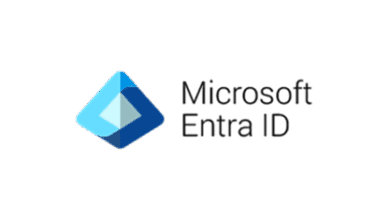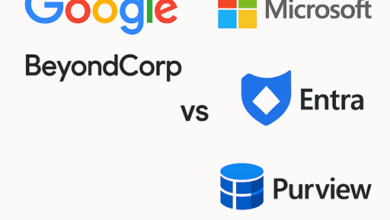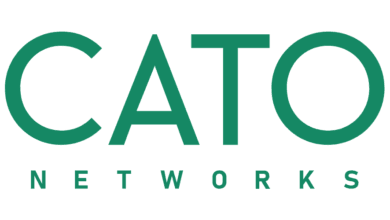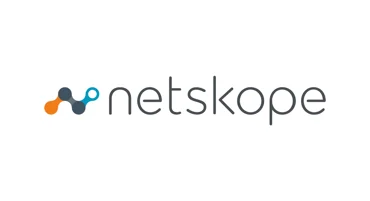Your Guide to the Best Vulnerability Scanners for Enterprise
In today’s ever-shifting cyber landscape, sitting back and hoping for the best simply isn’t an option. As of mid-2025, with threats evolving at lightning speed, proactively finding and fixing vulnerabilities is paramount for any enterprise.
It’s not enough to just have a firewall or a SASE architecture. Your business need to constantly hunt for weaknesses before attackers do. This is where vulnerability management, driven by powerful scanning tools, comes into play.
A good vulnerability scanner acts like a digital detective, meticulously probing your systems, applications, and networks for known flaws.
These flaws could be anything from unpatched software and misconfigured settings to weak credentials or exploitable code.
But with so many options out there, how do you pick the best one for your enterprise?
Let’s dive into the top five contenders for the best Vulnerability Scanners for Enterprise. These are the tools making waves in the industry right now.
What to Look for in an Enterprise Vulnerability Scanner
Before we get to the specific tools, let’s consider what really matters for a large organization.
You need comprehensive coverage, meaning the scanner can examine your entire IT environment, from on-premises servers and network devices to cloud instances, containers, and web applications.
It’s not just about finding vulnerabilities; it’s about seeing the whole picture.
Scalability is another huge factor. Your chosen solution must grow with your business, handling thousands of assets without grinding to a halt.
Automation is key, allowing you to schedule continuous scans and integrate with your existing security tools like SIEMs (Security Information and Event Management) and SOAR (Security Orchestration, Automation, and Response) platforms.
Prioritisation is also critical. Enterprises face hundreds, even thousands, of vulnerabilities.
The best scanners use intelligence to tell you which ones pose the highest actual risk to your business, helping you focus your remediation efforts.
Finally, clear, actionable reporting is non-negotiable for communicating findings to both technical and executive teams.
Top 5 Vulnerability Scanners for Enterprise (2025)
These five solutions consistently rank high for their capabilities, reach, and effectiveness in complex enterprise environments.
1. Tenable.io (and Nessus Professional)
Tenable is widely considered a gold standard in exposure management. Their flagship cloud-based platform, Tenable.io, leverages the power of Nessus, arguably the most well-known vulnerability scanner, but extends it into a full enterprise-grade vulnerability management solution. Nessus Professional, the standalone version, remains popular for targeted or smaller-scale scanning.
Tenable.io excels in its sheer breadth of vulnerability coverage. It boasts an incredibly comprehensive and frequently updated vulnerability database, capable of identifying an extensive range of weaknesses across IT, OT (Operational Technology), and even IoT environments. Its scanning capabilities are robust, offering both credentialed (authenticated, for deeper insights) and unauthenticated scans.
What truly sets Tenable.io apart for enterprises is its exposure management approach. It doesn’t just find vulnerabilities; it correlates them with real-world threat intelligence and asset criticality to provide a clear, risk-based score. This helps security teams prioritize remediation efforts based on actual business impact, not just raw CVE scores.
The platform’s integrations are strong, allowing it to fit well into existing security ecosystems. The reporting features are highly customizable, which is vital for compliance and executive briefings. While Tenable solutions can be a significant investment, their accuracy, comprehensive coverage, and prioritization capabilities often justify the cost for large organizations. Some users occasionally find the interface can be a bit dense initially, but its power is undeniable once mastered.
2. Qualys VMDR (Vulnerability Management, Detection, and Response)
Qualys has been a pioneer in cloud-based security, and their VMDR platform is a testament to that. It’s a comprehensive, cloud-native solution designed to give organizations full visibility into their global IT assets and their security posture. Qualys VMDR uniquely combines vulnerability management with detection and response capabilities, all from a single agent.
Qualys VMDR shines in its ease of deployment and scalability due to its cloud-native architecture. The platform uses a single agent to continuously collect security intelligence across endpoints, on-premises servers, cloud workloads, and web applications. This continuous monitoring is a huge advantage for dynamic enterprise environments.
VMDR provides automated vulnerability detection, prioritizes risks using real-time threat intelligence, and offers integrated patch management capabilities. This “detect, prioritize, and patch” workflow within one platform is incredibly efficient. Its ability to manage vulnerabilities across hybrid and multi-cloud environments seamlessly is also a strong selling point.
Users generally praise Qualys for its comprehensive dashboards and reporting, which can be tailored for various stakeholders. The platform’s compliance reporting is particularly robust, helping organizations adhere to regulations like PCI DSS, HIPAA, and GDPR. While the breadth of features can lead to a steeper learning curve for some new users, Qualys’s unified approach often results in significant operational cost savings and improved security outcomes.
3. Rapid7 InsightVM
Rapid7 InsightVM is another enterprise-grade vulnerability management solution known for its real-time visibility and powerful analytics. It’s part of Rapid7‘s broader Insight platform, which integrates various security tools like SIEM and application security. InsightVM focuses on providing deep context into vulnerabilities and helping teams prioritize effectively.
Rapid7 InsightVM stands out for its emphasis on live, continuous vulnerability assessment. It uses a combination of network scanning, agent-based data collection (via the Insight Agent), and integrations with cloud providers to maintain an up-to-date view of your attack surface. This dynamic asset discovery is crucial for rapidly changing environments.
One of InsightVM’s key strengths is its risk prioritization engine. It combines traditional CVSS scores with factors like exploitability, malware exposure, and the age of the vulnerability to deliver a more accurate, actionable risk score for each finding. This helps security teams cut through the noise and focus on the vulnerabilities that truly matter.
The “Remediation Projects” feature is also highly regarded. It provides clear visibility into remediation responsibilities, assigns tasks, and tracks progress, fostering better collaboration between security and IT operations teams. InsightVM offers strong integration with over 40 other security technologies, enhancing overall security operations. Rapid7’s robust vulnerability research and attacker behavior insights feed directly into the platform, ensuring relevance. While its comprehensive nature means a certain level of complexity, its user interface is generally considered intuitive and well-designed for security analysts.
4. Microsoft Defender Vulnerability Management
As part of the sprawling Microsoft 365 Defender suite, Microsoft Defender Vulnerability Management (MDVM) is increasingly becoming a powerful contender, especially for organizations deeply invested in the Microsoft ecosystem. It’s tightly integrated with Microsoft Defender for Endpoint and other Microsoft security services.
MDVM’s biggest advantage is its native integration with Windows environments, Azure, and other Microsoft cloud services. For organizations that are already heavily using Microsoft Defender for Endpoint, MDVM provides a seamless and agentless (for Windows endpoints) vulnerability assessment capability. It leverages endpoint telemetry for continuous monitoring, identifying vulnerabilities, misconfigurations, and software weaknesses.
It offers unique insights into the “exploited by threat actors” context, prioritizing vulnerabilities that are actively being exploited in the wild. This real-time threat intelligence is incredibly valuable for immediate remediation. MDVM also includes powerful capabilities for security baseline assessment, software inventory, and even remediation actions like built-in patching.
While exceptionally strong within the Microsoft ecosystem, its coverage for non-Microsoft operating systems or highly diverse network devices might require augmentation with other tools. However, for many enterprises, the deep integration, shared threat intelligence, and simplified management within the Defender suite make it a highly compelling and cost-effective option, particularly if they are already licensing Microsoft 365 E5 or similar bundles.
5. CrowdStrike Falcon Spotlight
CrowdStrike Falcon Spotlight is CrowdStrike’s integrated vulnerability management module within its renowned Falcon platform. Leveraging CrowdStrike‘s lightweight single agent and cloud-native architecture, Spotlight provides real-time vulnerability visibility specifically for endpoints.
Falcon Spotlight excels in its real-time, agent-based approach to endpoint vulnerability management. Unlike traditional scanners that run periodic scans, Spotlight continuously monitors endpoint activity, quickly detecting new vulnerabilities as they emerge or as new software is installed. This “always-on” visibility is a huge advantage for securing dynamic endpoint environments.
It identifies vulnerabilities by correlating endpoint telemetry with CrowdStrike’s vast threat intelligence and vulnerability database. The prioritization is driven by actual exploitability and threat activity, giving security teams precise guidance on which endpoint vulnerabilities to tackle first. The single agent architecture means there’s no need to deploy additional agents for vulnerability management if you’re already using CrowdStrike for EDR (Endpoint Detection and Response).
Its strength lies firmly in endpoint security, making it an excellent choice for organizations that prioritize securing their workstations, laptops, and servers. While not a comprehensive network or web application scanner on its own, its deep endpoint insights are invaluable. For enterprises already using the Falcon platform, Spotlight offers a highly efficient and integrated way to address endpoint vulnerabilities without adding complexity. It’s particularly strong for organizations that need to quickly understand their exposure to actively exploited endpoint vulnerabilities.
Next Steps
Choosing the right vulnerability scanner is a strategic decision for any enterprise.
There’s no single “best” solution for everyone; it truly depends on your specific environment, budget, existing security stack, and risk tolerance.
However, by carefully evaluating these top contenders – Tenable.io, Qualys VMDR, Rapid7 InsightVM, Microsoft Defender Vulnerability Management, and CrowdStrike Falcon Spotlight – you’ll be well-equipped to find a solution that helps you proactively manage your attack surface and stay ahead of the ever-present threat of cyberattacks.



